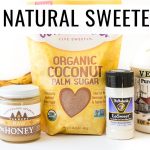Jaggery vs panela are two popular sweeteners derived from sugar cane. While they share similarities, they also have distinct characteristics that make them unique. In this comprehensive guide, we’ll delve into the differences between jaggery and panela, explore their uses, benefits, and nutritional profiles, and provide valuable insights to help you choose the right sweetener for your needs.
What is Jaggery?
Jaggery, also known as “gur” or “gud,” is a traditional non-centrifugal cane sugar consumed in many parts of the world, particularly in Asia and Africa. It is made by boiling sugar cane juice until it solidifies and then shaping it into blocks or cones.
Characteristics of Jaggery:
- Natural sweetness with a rich, caramel-like flavor
- Varying shades of brown, ranging from light to dark, depending on the processing method and impurities
- Soft and crumbly texture, easily broken into pieces
- Contains molasses, minerals, and vitamins due to minimal processing
Uses of Jaggery:
- Sweetener in traditional Indian sweets and desserts like “laddoos,” “halwa,” and “chikkis”
- Flavoring agent in savory dishes, curries, and chutneys
- Ingredient in herbal remedies and Ayurvedic preparations for its supposed health benefits
Benefits of Jaggery:
- Rich source of iron, potassium, magnesium, and other minerals
- Provides energy and boosts immunity
- Acts as a digestive aid and detoxifier
- May help alleviate symptoms of cough and cold
What is Panela?
Panela, also known as “rapadura” or “piloncillo,” is a traditional unrefined cane sugar widely consumed in Latin America, particularly in countries like Colombia, Mexico, and Brazil. It is made by evaporating sugar cane juice until it thickens and then pouring it into molds to solidify.
Characteristics of Panela:
- Dark brown color with a grainy texture
- Solid block or cone-shaped form
- Intense, caramel-like flavor with hints of molasses
- Nutrient-rich due to minimal processing
Uses of Panela:
- Sweetener in beverages such as coffee, tea, and hot chocolate
- Ingredient in traditional desserts like “arequipe” (caramel sauce) and “dulce de leche”
- Flavoring agent in savory dishes, sauces, and marinades
- Base for making alcoholic beverages like “agua ardiente” or “cachaca”
Benefits of Panela:
- High in vitamins and minerals, including calcium, iron, and vitamin C
- Provides sustained energy and reduces fatigue
- Supports bone health and aids in digestion
- Contains antioxidants and antimicrobial properties
Jaggery vs Panela A Comparison of sweeteners
Production Process:
- Jaggery: Made by boiling sugar cane juice until it solidifies and then shaping it into blocks or cones.
- Panela: Made by evaporating sugar cane juice until it thickens and then pouring it into molds to solidify.
Color and Texture:
- Jaggery: Varies in shades of brown, with a soft and crumbly texture.
- Panela: Dark brown in color, with a grainy texture and solid block or cone-shaped form.
Flavor Profile:
- Jaggery: Natural sweetness with a rich, caramel-like flavor.
- Panela: Intense, caramel-like flavor with hints of molasses.
Nutritional Content:
- Jaggery: Rich source of iron, potassium, magnesium, and other minerals.
- Panela: High in vitamins and minerals, including calcium, iron, and vitamin C.
Culinary Uses:
- Jaggery: Used as a sweetener in sweets, desserts, and savory dishes, as well as in herbal remedies.
- Panela: Used as a sweetener in beverages, desserts, savory dishes, and alcoholic beverages.
Which One Should You Choose?
- For Traditional Indian Cuisine: Jaggery is the preferred choice for authentic Indian sweets and desserts like “laddoos,” “halwa,” and “chikkis.”
- For Latin American Dishes: Panela is commonly used in Latin American cuisine for beverages, desserts, savory dishes, and alcoholic beverages.
- For Nutritional Benefits: Both jaggery and panela offer health benefits due to their rich mineral content, making them suitable alternatives to refined sugar.
Frequently Asked Questions (FAQs):
Is jaggery healthier than panela?
Both jaggery and panela offer similar health benefits due to their nutrient-rich composition. However, the choice between the two depends on personal preference and culinary requirements.
Can jaggery and panela be used interchangeably in recipes?
Yes, jaggery and panela can be used interchangeably in most recipes that call for unrefined cane sugar. However, keep in mind that they have slightly different flavors, so the taste may vary slightly.
Are jaggery and panela suitable for people with diabetes?
While jaggery and panela are considered healthier alternatives to refined sugar, they still contain sucrose and should be consumed in moderation by individuals with diabetes. It’s advisable to consult a healthcare professional for personalized dietary recommendations.
Where can I buy jaggery and panela?
Jaggery and panela are available at most grocery stores, specialty food stores, and online retailers that offer international ingredients.
To explore more visit this website
Conclusion:
In conclusion, both jaggery and panela are wholesome, natural sweeteners that offer unique flavors and nutritional benefits. Whether you’re preparing traditional Indian sweets or Latin American dishes, incorporating jaggery or panela can add depth and richness to your culinary creations. By understanding their differences and culinary uses, you can choose the right sweetener to elevate your cooking and embrace the richness of diverse cultural cuisines.










